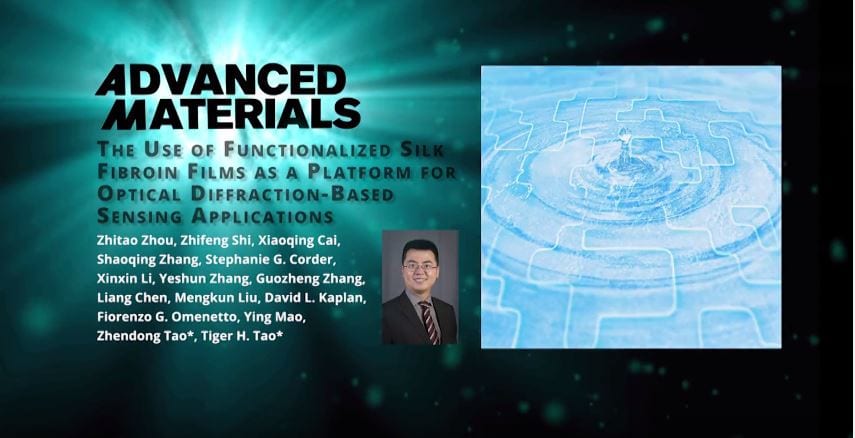In times where biotechnology and regenerative medicine are on the rise, there is an increasing demand for non-invasive, sustainable, biocompatible, and biodegradable sensing devices. Diffraction gratings, known as diffractive optical elements or DOEs, could meet this demand if glass was substituted for a different material.
In their communication in Advanced Materials, Tiger H. Tao and his co-workers introduce biocompatible, easily functionalized diffraction gratings made of silk fibroin films.
The researchers harvest aqueous silk fibroin solution from cocoons of the silk worm. Simply casting the solution on a computer-designed silicon mold generates diffraction gratings with a size of just 2 µm. Silk gratings doped with the enzymes horseradish peroxidase or catalase both show excellent enzymatic activity. In contrast to non-biocompatible glass gratings, this activity can be maintained for months.
Amazingly, the silk DOE’s high sensitivity to its surroundings allows for a variety of applications. The water permeability of silk enables a clear readout of the hydration state, a feature not available to glass gratings or synthetic polymer ones. Supports of different refractive indices influence the diffraction pattern, providing a measure of the environment’s refractive index. Because diffraction quality depends on structural integrity, biodegradation of the silk DOE can be monitored directly in in vivo experiments, revealing an extended water vapor annealing process as crucial for obtaining a stable protein matrix. Finally, doping of the silk-DOE with the antibiotic penicillin yields an antimicrobial skin patch with live drug release readout, which is reflected in the degradation of the diffraction pattern.
One unique feature of the silk DOE is its ability to mask information. Information stored in crown-glass-based diffraction gratings is displayed when illuminated with the correct wavelength, but by applying a coating of silk fibroin solution to the glass grating, a coating of almost matching refractive index is generated, hiding the information. Removing the silk coating then reveals this hidden information.
To find out more about this versatile, biocompatible sensor, please visit the Advanced Materials homepage.

















